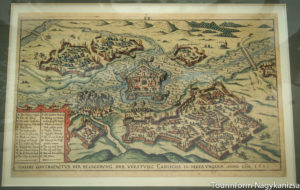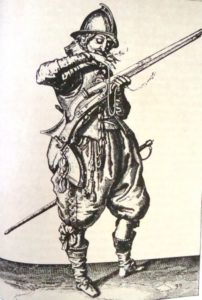The Long War, Part 29 / 1601, the unsuccessful siege of Kanizsa Castle

The unsuccessful siege of Kanizsa Castle took place between September-November, 1601. While the military actions were still going on in earnest around Fehérvár Castle, the troops of Styrian Archduke Ferdinand have reached Kanizsa Castle. This fort, taken by the Turks just in the previous year, has been restored to its strength and it was very well fortified and reinforced. Although the number of its garrison was not too high, the Ottomans were valiantly defending themselves against the Christian army of 28-30,000 men. The Christian army consisted of Italian, Spanish, German, Hungarian, and Croatian troops and they arrived at Kanizsa on 9-10 September.

The mercenaries sent by the Pope suffered a serious loss right at the beginning of the siege because their leader, the cousin of the Pope, Francesco Aldobrandini got sick and died. His place was taken over by Flaminio Delphino. The defenders were led by the Pasha of Kanizsa, Tirjéki Haszán who had 1,800 soldiers in the fort. Here is more about the history of Kanizsa castle:
https://www.hungarianottomanwars.com/ottoman-occupied-lands/kanizsa/
First, the Christians were besieging the castle only from the north so the Ottomans were still able to get reinforcement and supplies from Szigetvár castle. However, Archduke Ferdinand moved the bigger part of his army on 18 September to the southern side of the fort, thus surrounding Kanizsa. The cannonade of the castle began on 11 September and serious damage has been caused to the northern walls and the bastions. The moats and the swamps were being filled up, too. The defenders were able to hinder these works quite successfully by their sallies. The Christians could repel these sallies only by suffering great casualties.

The siege work was further hindered by the rainy and cold weather. The commanders of the Christian artillery, Galeano, and Eggenberg were killed along with Rupprecht. The besiegers demanded several times from Pasha Hasszán to surrender the castle, saying that Fehérvár had fallen and the Turk reinforcement had also been defeated there. Allegedly, the defenders were shown the heads of those pashas who had been killed there but Tirjéki Haszán refused the surrender.
The Christian military council decided on 28 October to launch an overall attack. Unfortunately, the swamps were not filled up and the troops had to approach the fort in the icy water, under heavy rifle fire. The assault was a total failure.

Ferdinand continued the bombardment of the walls but the defenders resisted despite their losses, their hunger, and shortage of gunpowder. Even more, they had the energy to make a sally but their charge was repelled by the Christians on 7 November, causing great losses in the Turk army.

General Russwurm arrived on 14 November with his 5-8,000 fresh soldiers from Fehérvár (Székesfehérvár) Castle, the troops of Nádasdy Ferenc may have been among them. (Please note, I use the Oriental name order for Hungarians where family names come first.) The arrival of the reinforcement was just too late, the military council decided to lift the siege on 15 November because it was snowing during the night.
The Christian army withdrew and the Turks caused great losses in the disordered units who had to leave behind their baggage and food just like the gunpowder and the cannons. The total loss of the Christians was about 9,000 men but it was even more demoralizing that Archduke Ferdinand was not able to achieve what the Ottomans had achieved one-and-a-half months before.
The Sultan made Hasszán a Vizier. The Ottomans gained a great moral victory by holding Kanizsa Castle. All in all, the Christians have been able to get the important fort of Fehérvár and could keep it against a three-fold larger enemy. General Basta had been successful in Transylvania, too. At the same time, Kanizsa castle remained in the hands of the Turks. The Christians decided to take Buda as successfully as they had taken Fehérvár and it was their plan for the following year.
Source: Szibler Gábor

Dear Readers, I can only make this content available through small donations or by selling my books or T-shirts.
If you like my writings, please feel free to support me with a coffee here:
You can check out my books on Amazon or Draft2Digital, they are available in hardcover, paperback, or ebook:
https://www.amazon.com/dp/198020490X
or at https://books2read.com/b/boYd81


My work can also be followed and supported on Patreon: Become a Patron!http://Become a Patron!


